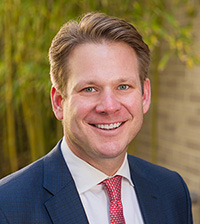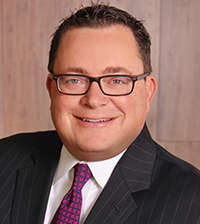Whether you strike up a conversation on a flight or are referred by a tennis partner, it remains a real estate truth: your buyer could be anyone. But when it comes to the luxury market, it can be more challenging to connect with the buyers and sellers looking to invest in premium properties. When your inventory is at the higher end of the market, what are the best ways to connect with a luxury clientele?
Sometimes, it helps to ask the experts. We spoke with Justin T. Kitsch, Vice Present at TTR Sotheby’s International Realty in Washington D.C., Marc Noah of Sotheby’s International Realty’s Beverly Hills Brokerage, and Paul Sudano with Monument Sotheby’s International Realty in Lutherville, Maryland, to get their take on how to meet — and secure — luxury buyers.
Luxury clients can be anywhere — if you know what to look for

Justin T. Kitsch, Vice President, TTR Sotheby’s International Realty
Kitsch agrees and adds that sometimes your next big buyer or seller is a little closer to home. “Washington D.C. is a small city, so when I meet people at the gym, in the neighborhood, or at our local watering hole, chances are we already know some of the same people. The next step is to invite these new contacts, and the friends we have in common, to an upcoming event, or to a dinner at a great restaurant.” In these personal, everyday scenarios, potential clients may speak more candidly about their real estate goals.
Likewise, Sudano is an active member of his community and connects with new clients simply through getting involved. “I have five children that are going or have gone through private school in Baltimore County,” he explains. “I have held many team parties, fundraisers, and events at my home that have introduced me to many new luxury homebuyers.”
Don’t just look for would-be clients; listen for them too

Marc Noah, Sales Associate, Sotheby’s International Realty — Beverley Hills Office
While tracking down the ideal client can require a bit of legwork, luxury homebuyers and sellers aren’t always subtle when it comes to their real estate woes or aspirations. Some are eager to mention that they’re looking for — or hoping to part with — a multimillion-dollar estate. “I met a client at a breakfast place a few years ago,” recalls Noah. “I overheard his conversation with the waitress and I made a comment to him. I ended up selling his house for $20 million.”
Chances are you’re constantly in situations where the only way to pass time is to chat with a stranger. Perhaps you’re on the train or waiting for your coffee order to come through. “Sitting in first class when I travel is a great strategy, too,” observes Noah. Wherever you find yourself, if people seem open to conversation, take the opportunity to build an authentic connection.
Encourage your contacts to extend invitations to your events

Paul Sudano, Real Estate Professional, Monument Sotheby’s International Realty
“Be creative and start with your inner circle of friends, but look at your wider sphere of influence to help build your business,” advises Sudano. An excellent way to do this is to let your clients invite a plus-one — or plus-two, or plus-three — to every event you host.
Kitsch agrees, and always takes the opportunity to celebrate a successful sale. “Once a deal is closed, take time to cultivate those relationships and to connect your clients together,” he says. “Host happy hours, arrange dinner parties, and don’t forget to have your clients bring their friends!”
And of course, be creative with your own open houses and showcases. For example, Sudano has hosted wine and spirit tastings at his available homes, highlighting the entertaining potential of the properties. This provides him with ample opportunity to connect with people with similar interests, many of whom he may not have known prior to the event.
Exceptional client experiences happen before they become clients
At the end of the day, luxury real estate is about exemplary attention to detail and superlative service. So the easiest way to connect with potential clients is to simply be human. “It’s not hard: be nice, always smile, and be of service to anyone and everyone,” says Noah. Though kindness is a reward in and of itself, sometimes there are other rewards for helping those who need a hand.
As always, keep building strong relationships with the buyers and sellers in your contact list, both past and present. “Your next client comes from an existing client,” says Kitsch. “Providing impeccable service to those you are already working with will lead to more referrals and a growing client base.”
Luxury real estate clients are a precious resource, to be sure. But by being observant, networking intelligently, and treating everyone with the dignity and respect they deserve, you’ll notice them — and they’ll notice you.
About Sotheby’s International Realty
Sotheby’s International Realty was founded in 1976 as a real estate service for discerning clients of Sotheby’s auction house. Today, the company’s global footprint spans 990 offices located in 72 countries and territories worldwide, including 43 company-owned brokerage offices in key metropolitan and resort markets. In February 2004, Realogy entered into a long-term strategic alliance with Sotheby’s, the operator of the auction house. The agreement provided for the licensing of the Sotheby’s International Realty name and the development of a franchise system. The franchise system is comprised of an affiliate network, where each office is independently owned and operated. Sotheby’s International Realty supports its affiliates and agents with a host of operational, marketing, recruiting, educational and business development resources. Affiliates and agents also benefit from an association with the venerable Sotheby’s auction house, established in 1744. For more information, visit www.sothebysrealty.com.
The affiliate network is operated by Sotheby’s International Realty Affiliates LLC, and the company owned brokerages are operated by Sotheby’s International Realty, Inc. Both entities are subsidiaries of Realogy Holdings Corp. (NYSE: RLGY) a global leader in real estate franchising and provider of real estate brokerage, relocation and settlement services. Sotheby’s International Realty Affiliates LLC and Sotheby’s International Realty Inc., both fully support the principles of the Fair Housing Act and the Equal Opportunity Act.
Source: click here
















